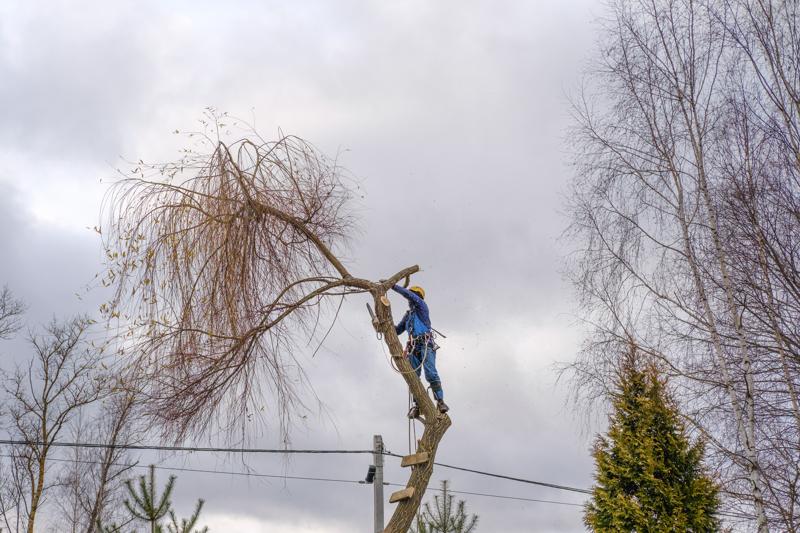Stay Ahead of the Game: Ways to Identify a Tree in Need of Felling

Tree removal is a complex and possibly dangerous job. If a tree is dying or diseased or is at risk to fall, the tree may have to be removed in order to avoid damage to the property and to guarantee safety. But how do you tell whether a tree should be cut down? This article will walk you through the signs to look out at and guide you determine when it’s time to call in experts.
Dead or dying trees
One of the evident signs that a tree must be taken down is if it is dead or dying. Dead trees are without leaves and could have a lifeless appearance. If a tree has no leaves or signs of growth, it is likely dead. Additionally, the bark of a dead tree may be dry, cracked or peeling.
Trees that are diseased
Diseased trees could pose a danger to the other plants and trees in the area. Common signs of disease in trees include yellowing leaves, wilted branches, and mushroom growth at the base and the top. If you suspect that your tree is suffering from disease, it’s important to have it inspected by a professional arborist.
Leaning Trees
Trees that lean to one side can indicate of a failing root structure and the tree may be at risk of falling. To identify if a leaning tree is at risk, look for cracks or breaks within the trunk and look into the soil surrounding the base of the tree. If you see any of these signs it is recommended to have the tree evaluated by an arborist.
Overhanging Branches
Overhanging branches of trees located close to power lines or structures could pose a threat to property and safety. If you’re concerned regarding branches that hang overhanging, it’s best to have the tree evaluated by an arborist who will determine if removal or trimming is required.
FAQs
How do I know if a tree is dead?
An individual tree can be said to be dead when it is without leaves and shows no signs of growth. The bark of a dead tree can be dry, cracked or peeling.
What are the signs of a dying tree?
The most common signs of disease on trees include dying leaves, wilted or yellowed branches, and the growth of mushrooms at the bottom of the tree.
Can you safely remove a tree yourself?
Tree removal is a difficult and dangerous task. It’s best to leave it to the experts to ensure the safety of you and your family members.
Conclusion
When you’re dealing with tree removal, it’s important to be able to identify the indications that a tree needs to be cut down. If you are aware of signs of dead or dying trees, sick trees, overhanging or leaning branches and overhanging branches, you can take the necessary steps to ensure the safety of your property and the people who live around you. If you think that the tree that is on your property needs to be removed and you are unsure, call Sydney Tree Lopping for a professional evaluation. Our arborists with years of experience are equipped with the knowledge and experience to handle all the tree removal requirements. Don’t take any chances with your safety. If you think a tree on your property should be removed, call Sydney Tree Lopping today for a professional evaluation. Our expert arborists will provide you with peace of mind that comes with knowing your property is safe hands. Call us today by dialing 1300 274 346 to schedule an appointment.





















